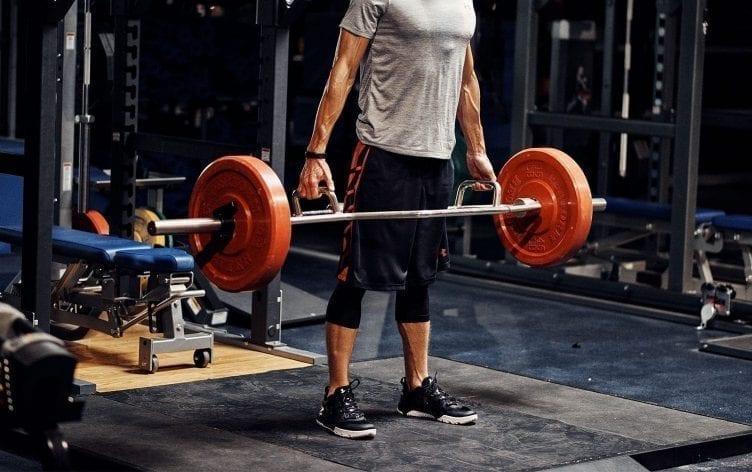How many reps and sets for weight loss?
The vast majority of people in the gym do not train purposefully: they often do everything without thinking about the exact result they want to achieve.
This is a huge shame, if you immerse yourself a bit in some basic knowledge regarding weight loss you will notice that you are making faster progress. It is important that you train specifically: your training goal determines how many reps and sets for weight loss.
Strength training intensity
The intensity of strength training is determined by the weight you move in a specific exercise and the effort you have to make to move that weight. The harder it is for you to move the weight, the higher the intensity. The easier it is for you to move the weight, the lower the intensity.
This intensity of the strength training is determined by the number of reps (= repetitions) that you do per set (= number of sets of a particular exercise). When you do 3 sets x 12 reps, you do an exercise with 3 sets of 12 reps per set, making a total of 36 reps. When you train with a light weight you can do more reps than if you would train with a heavier weight.
- Lighter weight -> More reps -> Lower intensity
- Heavier weight -> Less reps -> Higher intensity
Reps and sets per objective
| Reps & Sets | Objective |
| 1-5 reps per set | Mainly power |
| 5-8 reps per set | Strength and muscle mass |
| 8-10 reps per set | Muscle mass with a little strength |
| 10-12 reps per set | Muscle mass with a little stamina |
| 12-15 reps per set | Endurance with a little muscle mass |
| 15-20 reps per set | Mainly stamina |
From this we can conclude the following:
- Few repetitions (high intensity) is best for developing strength.
- A lot of repetitions (low intensity) is best for improving endurance.
- Average number of repetitions (medium intensity) is best for building muscle mass.
Of course you never only train on one aspect: if you primarily work on your endurance, for example, you will still become stronger. However, for optimal results, it is wise to look at your primary goal when determining the number of repetitions for your workout.
Repetitions, maximum strength and rest breaks
The force you need to move a weight that is as heavy as possible is also called maximum force. This is the heaviest weight you can move in one repetition. When you train purely on strength, you train closer to your maximum strength than when you mainly train on endurance. You also need longer breaks to recharge yourself for the next set.
power
- High intensity
- 1 to 8 reps per set
- Between 85 and 100% of your maximum power
- Rest breaks of 90 seconds or more
Muscle mass
- Average intensity
- 8 to 12 reps per set
- Between 75 and 85% of your maximum strength
- Rest breaks of 60 to 90 seconds
Muscle Endurance
- Low intensity
- 15 to 20 reps per set
- Up to 75% of your maximum power
- Rest breaks of about 45 seconds
More reps for more muscle definition?
It is often thought that more reps (15-20) are needed to get your muscles more defined. However, that is not correct! Ultimately, it is your fat mass that determines how visible and pronounced your muscles are, not the number of repetitions you perform during exercise. You build up muscles by progressively training heavily and eating above your energy requirements.
By eating below your energy requirement, you reduce the fat percentage, making your muscle mass more visible. Even during a period of fat loss , it is wise to continue training heavily (but controlled), so that you maintain your muscle mass as much as possible and you look a lot more impressive as your fat percentage decreases.
Is it completely unnecessary to do a lot of repetitions? As always, that depends entirely on your goals. If you want to improve the endurance of your muscles, or if you want to give the muscles a new training stimulus, then it is of course an option to increase the number of repetitions, it is less relevant for lowering your fat percentage.



